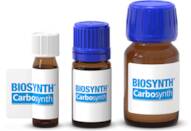
Poly(propylene glycol) - Aveage Mn 2000
CAS: 25322-69-4
Ref. 3D-FP164946
| 5g | To inquire | ||
| 10g | To inquire | ||
| 25g | To inquire | ||
| 50g | To inquire | ||
| 100g | To inquire |
Product Information
- 2000Lm
- 3003N
- 3600K
- 3600Z
- 835E
- Emkapyl
- PPG
- Paral
- Poly(1,2-epoxypropane)
- Poly(methyloxirane)
- See more synonyms
- Poly[oxy(methyl-1,2-ethanediyl)]α-hydro-ω-hydro)
- Polyoxypropylenediol
- Polypropyleneglycol
- Polypropylenglykol
- Prodiol
- Smc-Ppf
- Smc-Pps
- Smc-Ppt
- Smc-Ppz
- Vittacol
- α-Hydro-ω-hydroxypoly(oxypropylene)
- α-Hydro-ω-hydroxypoly[oxy(methyl-1,2-ethanediyl)]
- α-Hydro-ω-hydroxypoly[oxy(methylethylene)]
Poly(propylene glycol) (PPG) is a polymer that can be used to create artificial skin. It has an average molecular weight of 2000 and can be used in the treatment of burns and other injuries. PPG also has been shown to have thermal expansion properties, which may be due to its ability to absorb water. PPG is most effective when it is dissolved in glycols such as ethylene glycol or propylene glycol, although it can form a gel at concentrations greater than 50%. PPG is not toxic to human cells and does not cause epidermal toxicity. This polymer does not contain any proteins or lipids, but it may form complexes with other substances such as metals or ions. The use of PPG for artificial skin is experimental and has not been approved by the FDA.
Chemical properties
Technical inquiry about: 3D-FP164946 Poly(propylene glycol) - Aveage Mn 2000
If you want to request a quotation or place an order, please instead add the desired products to your cart and then request a quotation or order from the cart. It is faster, cheaper, and you will be able to benefit from the available discounts and other advantages.





